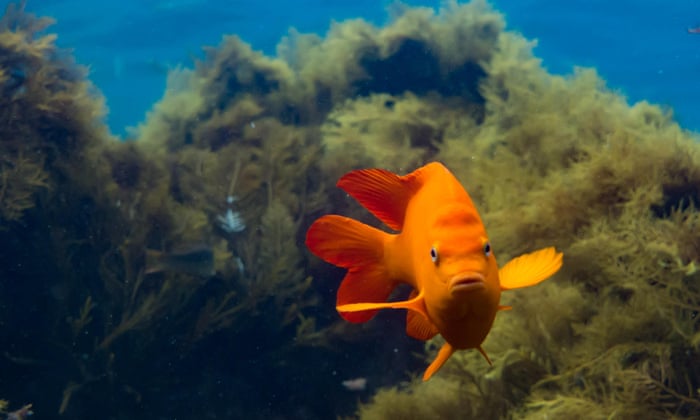A Brief Colonial History Of Ceylon(SriLanka)
Sri Lanka: One Island Two Nations
A Brief Colonial History Of Ceylon(SriLanka)
Sri Lanka: One Island Two Nations
(Full Story)
Search This Blog
Back to 500BC.
==========================
Thiranjala Weerasinghe sj.- One Island Two Nations
?????????????????????????????????????????????????Monday, April 1, 2019
New antibiotics could be developed using fish slime, scientists say
Mucus that protects fish contains substances that could help tackle MRSA and E coli
A garibaldi fish near Santa Catalina, California. Researchers swabbed 17 species of fish caught off the southern California coast. Photograph: Michael Greenfelder/Alamy Stock Photo
 Nicola Davis @NicolaKSDavis-
Nicola Davis @NicolaKSDavis-Fish slime could be key to the development of new antibiotics, researchers say.
Antibiotic resistance is a growing danger, with experts warning of a return to a situation where everyday infections could become life-threatening. The NHS is aiming to cut antibiotic use by 15% by 2024 in a bid to tackle the problem – which has been called a danger to humanity – while the government has also announced it is looking into offering incentives to drug companies to come up with new antibiotics.
But academics are also on the case. Now researchers say new antibiotics might be found in the layer of mucus that coats the outer surface of young fish.
While the mucus itself helps protect fish from harmful bacteria, fungi and viruses, the team are interested in the collection of microbes it is home to – the so-called microbiome – and the substances it produces.
“We believe the microbes in the mucus add chemistry to the antiseptic power of the mucus and that new bioactive compounds might be discovered from the fish microbiome,” said Dr Sandra Loesgen, the head of the research group behind the work at Oregon State University.
The research, presented at the American Chemical Society spring national meeting in Orlando, Florida, involved the team swabbing 17 species of fish caught off the southern California coast.
In total, 47 different strains of bacteria found in the mucus of the fish were grown separately and the cocktails of substances they produced were collected and tested for their antimicrobial prowess.
The team say a number of the strains produced chemical mixtures that were able to tackle the methicillin-resistant Staphylococcus aureus, or MRSA, with a smaller proportion able to tackle E coli. Some also proved effective against the problematic yeast Candida albicans, and even colon cancer cells.
While the team say it is not clear whether the bacteria found are part of the typical surface flora of the fish species, they are now working to unpick which particular substances within the chemical mixtures are behind the antimicrobial effects.
“Thus far, we only analysed in detail one strain [found on a pink surfperch] and no novel chemicals have been found,” said Loesgen. But, she added, there are many more strains to go.
Dr Mark Webber, an expert on antibiotic resistance at Quadram Institute Bioscience, said that while the research was in its early stages, it was important to hunt for antibiotics in unusual places.
“Most of our current antibiotics were originally identified from microbes that live in the soil and produce them to kill other, competing bacteria. We now face a critical lack of new antibiotics for use in people so searching for new drugs in other environments is exciting and timely,” he said. “The new drugs found here by bacteria living on fish are only active against some of our main problem pathogens but it may be possible to modify these or find future drugs effective against the most dangerous superbugs.”
Laura Piddock, a professor of microbiology at the University of Birmingham, was also cautiously optimistic.
“Finding antimicrobial substances from any natural environment is helpful in the search for new antibiotics – particularly if they are active against the WHO priority pathogens,” she said. “However, going from the test tube to a safe and efficacious drug in a patient is only the beginning of a lengthy and costly drug development process.”
